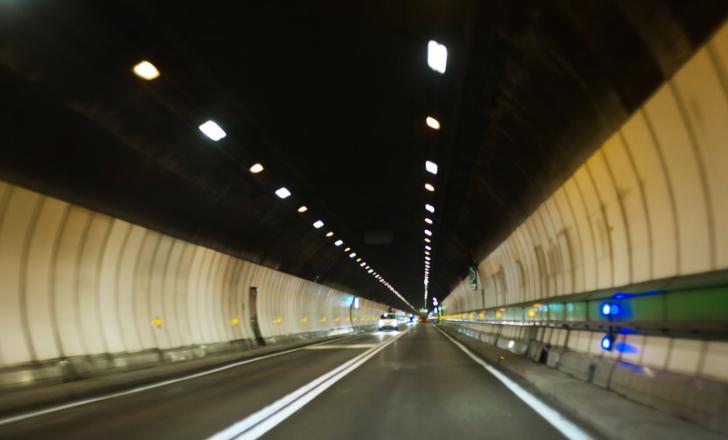
Planned maintenance work will see the busy Mont Blanc Tunnel connecting France and Italy being closed in 2024. The tunnel will close to traffic between 2nd September 2024 and 16th December 2024.
This will allow two 300m sections of the tunnel to be renovated. The work was planned originally to be carried out in 2023 but had to be delayed following the landslide on the A43 at Maurienne. A series of overnight closures will also be carried out until June 2024 to allow for resurfacing work and drivers using the link are advised to check the schedule to ensure they will not face delays.
The Mont Blanc Tunnel is one of the most important international road transport links in Europe, with a significant percentage of Italy’s exports being transported by truck through the link. Construction started in 1959 and was completed in 1965, with the link currently handling around 1.9 million vehicles/year.
The 11km Mont Blanc Tunnel links Chamonix in France with Courmayeur Italy via European route E25.
A devastating fire in 1999 caused by a truck fire resulted in 39 fatalities and was followed by a lengthy closure until 2022 while extensive safety upgrades were carried out. Since the tragic fire in the Mont Blanc Tunnel, France has spent more than €2 billion upgrading road tunnels.
New safety regulations for road tunnels were introduced in Europe in the wake of three horrific fire disasters. The Tauern Tunnel in Austria and the Mont Blanc Tunnel connecting France and Italy both experienced major fires in 1999, followed by the Gotthard Tunnel in Switzerland in 2001. These major incidents all involved vehicle fires and resulted in multiple fatalities, 12 in the Tauern Tunnel, 39 in the Mont Blanc Tunnel and 11 in the Gotthard Tunnel, while there were many more injured. Following these horrendous disasters, four tests were carried out on the Runehamar road tunnel in Norway to simulate different types of vehicle fires. The collated data was then analysed, with the results being used to form new regulations intended to boost safety and prevent such disasters from happening again. The new European tunnel regulations have also had a strong influence worldwide, with similar requirements now also being made in the US, the Middle East, Latin America and Asia.
Many of the fatalities were from the inhalation of smoke from the fires, some of this being toxic, so improved ventilation was a number one priority. The tunnel structures had also been damaged by the fires, so better heat protection has been implemented to ensure structural integrity. With vehicle fires being a major concern, measures were also taken to ensure faster and more effective control of any incidents.
Key points, in addition to the ventilation infrastructure to remove smoke, included the installation of better traffic and heat monitoring equipment, new fire control systems, new heat resistant tunnel cladding and also improved emergency rescue facilities. Following the introduction of these new regulations, all existing major road tunnel links in Europe are being retrofitted with new safety equipment. Meanwhile any new tunnels are being fitted with these latest systems.
The aftermath of this disaster, and another subsequent fatal tunnel fire in Austria, resulted in substantial changes to tunnel safety requirements in Europe, with key updates being implemented in all tunnels. Lessons learned from the disaster have also influenced tunnel safety requirements on a global basis.












